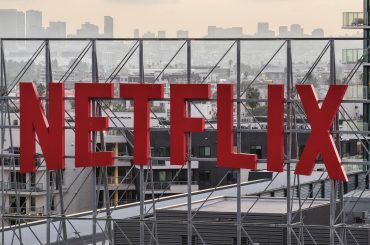
- Earnings Season
- Media & Gaming
- Streaming
Netflix Q3: Perfect Execution Meets Harsh Market Reality
7 minute read

Netflix’s record-breaking quarter highlights operational mastery, but Wall Street’s response reveals how perfection now meets punishment in the streaming era.
When Netflix reported third-quarter results on October 21, 2025, the company delivered what should have been a masterclass in strategic transformation. Revenue hit Wall Street’s $11.51 billion mark precisely, up 17% year-over-year. Membership swelled to 282 million globally, with five million net additions—the strongest quarterly performance since late 2023. The advertising tier, launched as an experiment barely three years ago, now commands 45% of new sign-ups and generated $1.1 billion in revenue—a staggering 70% surge.
Yet the market’s verdict arrived swiftly and without mercy: shares plunged 6% in after-hours trading, erasing $25 billion in market capitalization, according to CNBC. The culprit? A single line item buried in the financial footnotes—a $619 million tax provision from a Brazilian regulatory dispute dating back nearly a decade. Earnings per share landed at $5.87, well short of the $6.96 consensus, and suddenly the narrative shifted from operational triumph to emerging-market liability.
This disconnect between fundamental strength and market reaction illuminates something deeper than quarterly volatility. It reveals the precarious tightrope Netflix now walks as it transitions from growth phenomenon to mature cash generator, where every deviation from perfection invites scrutiny, and where past sins—even those committed in distant jurisdictions—exact contemporary penalties.
The Architecture of Transformation
Strip away the Brazilian tax anomaly, and Netflix’s quarter tells a remarkably coherent story of strategic evolution. The company has spent the past 18 months executing a delicate pivot: transforming itself from a subscription-volume machine into a diversified media ecosystem capable of extracting maximum value from each relationship.
Consider the advertising metamorphosis. When Netflix finally acquiesced to an ad-supported tier after years of principled resistance, skeptics questioned whether subscribers would tolerate commercials and whether Madison Avenue would embrace a platform built on interruption-free viewing. The Q3 numbers settle that debate decisively. Ad revenue now represents 10% of total intake, with the tier capturing nearly half of all new customers. Co-CEO Greg Peters declared the company is “building a full-funnel advertising platform that delivers measurable results for brands”—language that signals ambitions far beyond simple pre-roll inventory.
This advertising ascent coincides with the maturation of Netflix’s password-sharing crackdown, an initiative that risked alienating the very users who had evangelized the service through informal account-sharing. Yet the gambit has paid dividends: account additions accelerated for a third consecutive quarter, concentrated heavily in EMEA and APAC where eight million net adds materialized. The password purge, once feared as an existential threat, instead revealed reservoirs of latent demand.
Content strategy, too, reflects newfound sophistication. The company’s $18 billion annual spend increasingly favors original productions—which command 80% of viewing hours—over licensed fare, a shift that amplifies both creative control and economic returns. Breakout successes like the second season of Squid Game, which garnered 1.2 billion views in its opening week, demonstrate Netflix’s retained capacity for cultural dominance. Meanwhile, unscripted programming delivers double the return on investment compared to licensed intellectual property, suggesting a more surgical approach to greenlight decisions.
Perhaps most intriguing is the company’s expansion into adjacent verticals. Gaming now consumes 100 million hours monthly across the subscriber base, a modest but growing engagement vector. Live events—most prominently an upcoming boxing spectacle pairing Mike Tyson against Jake Paul—represent a calculated incursion into linear television’s last redoubt. These initiatives collectively signal that Netflix views its platform not as a repository for on-demand video, but as a canvas for synchronized experiences that can command premium attention.
The Emerging Market Conundrum
Yet the Brazilian tax provision exposes vulnerabilities in Netflix’s global expansion thesis. The $619 million charge relates to a tax audit spanning 2016 to 2023, a period when Netflix aggressively expanded its Latin American footprint with relatively light regulatory scrutiny. Now, as governments worldwide reassess their approach to digital services taxation, Netflix confronts the possibility of similar disputes metastasizing across other developing markets.
This matters because emerging economies represent Netflix’s primary growth frontier. While U.S. and Canadian membership remained essentially flat at one million additions, EMEA and APAC delivered the subscriber momentum. The company has deliberately shifted its revenue mix, reducing North American dependence from 50% to 40% over recent years, with Asia-Pacific now accounting for a quarter of total intake. This geographic diversification has unlocked vast new audiences, but it has also multiplied jurisdictional complexity.
The tax dispute underscores a fundamental tension in Netflix’s model. The company has benefited enormously from the internet’s borderless architecture, collecting revenue globally while concentrating corporate functions in favorable jurisdictions. Tax authorities, facing budgetary pressures and populist demands to extract value from multinational tech platforms, increasingly view this arrangement as untenable. Netflix contests the Brazilian assessment vigorously, but the mere existence of the dispute—and its potential to recur—introduces an element of geopolitical risk that was largely absent from the company’s earlier expansion phase.
The Cash Flow Inflection
Amid the earnings miss, one metric deserves particular attention: free cash flow surged 55% to $2.66 billion, a figure that funded $2.1 billion in share repurchases and enabled Netflix’s inaugural quarterly dividend of $0.50 per share. This represents a watershed moment for a company that spent its first two decades as a voracious consumer of capital, perpetually raising debt to fund content acquisition.
The free cash generation reflects operational maturity. Content spend, while still substantial at $4.5 billion quarterly, has been rationalized through data-driven commissioning decisions and AI-enhanced recommendation systems that reduce churn to just 2.5% annually. Operating margins held steady at 23.9%, a level that would have seemed fantastical during Netflix’s growth-at-all-costs era but now appears sustainable given the company’s scale advantages and content library depth.
The dividend initiation carries symbolic weight beyond its modest 0.3% yield. It signals management’s confidence that the business has transitioned from expansion mode to harvesting mode, capable of returning capital to shareholders while still investing adequately in competitive differentiation. For a company that prided itself on audacious content bets financed by creative destruction of its own catalog, this represents an identity shift—from disruptor to incumbent.
Competitive Implications
Netflix’s Q3 performance must be contextualized within the broader streaming landscape, where rivals face starker challenges. Disney+ continues losing subscribers in certain markets despite franchise strength. Paramount+ bleeds cash as it pursues scale. Warner Bros. Discovery wrestles with debt burdens inherited from its merger. Against this backdrop, Netflix’s combination of membership growth, advertising momentum, and cash generation appears almost embarrassing in its superiority.
The company now commands 70% of U.S. streaming time, an overwhelming share-of-attention that translates into pricing power and advertiser interest. Its forward price-to-earnings ratio of 35x, while elevated compared to Disney’s 22x, arguably reflects the market’s recognition that Netflix has achieved what its competitors still pursue: a self-sustaining ecosystem where content investment generates returns sufficient to fund growth without perpetual capital infusions.
Yet saturation looms. Management’s 2025 revenue guidance of $45.1 billion implies 15-16% growth—healthy by most measures, but representing deceleration from this year’s pace. The ad tier provides a new monetization lever, but advertising revenue’s path to 15% of total by year-end 2025 assumes continued adoption and pricing power that may not materialize if economic conditions deteriorate. Live events offer excitement but demand investment and face a $500 million breakeven threshold that will take time to cross.
The Verdict
Netflix’s Q3 earnings encapsulate the peculiar dynamics of contemporary market judgment, where operational excellence can be overshadowed by accounting irregularities and where long-term strategic repositioning receives less attention than short-term earnings misses. The company has executed a remarkable transformation, building advertising capabilities, extracting value from password-sharers, and achieving cash flow generation that eluded it for years.
The Brazilian tax provision, painful as it may be, represents the cost of doing business in a multipolar regulatory environment—a friction Netflix must accept as the price of global scale. What matters more is whether the company’s core business model remains resilient, whether its content investments continue generating disproportionate cultural impact, and whether its advertising platform can scale without degrading the user experience.
On these fundamental questions, Q3 provides encouraging answers. Netflix has not merely survived the transition to maturity; it has architected a blueprint for sustained profitability in an industry littered with cautionary tales. The market’s 6% punishment may sting, but it obscures a more durable truth: Netflix remains the streaming industry’s standard-bearer, and its combination of scale, sophistication, and strategic clarity grows more difficult to replicate with each passing quarter.








